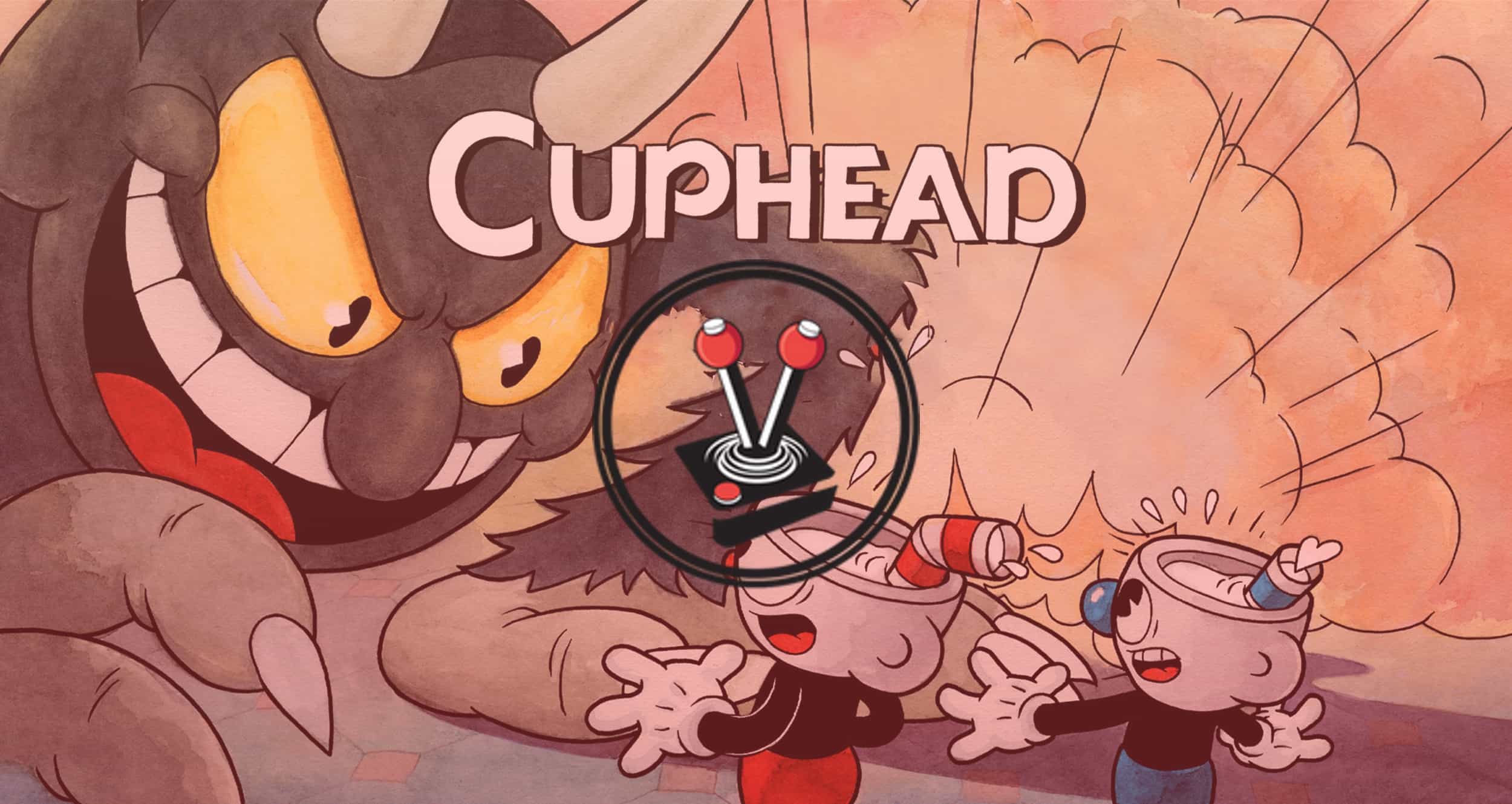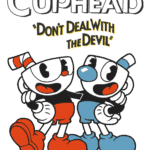Cuphead is a game that has been in development since 2010. However, it was the game’s reveal during Microsoft’s Xbox Press Briefing at E3 2014 that officially made gamers around the world take notice. Created by StudioMDHR Entertainment, one of the standout features of the game’s reveal was its visual aesthetic, one based on 1930s American cartoons. Another unique feature of the game is that it abides to the ‘run and gun’ genre, which was incredibly popular in the 80s and 90s.
Since the game’s initial reveal, it has made several appearances at major gaming expositions. Each time, it has wowed both critics and gamers alike. At E3 2017, a release date for the long awaited title was finally announced. Now, here we are, several years later, and Cuphead is finally available for anyone to play. So what is it like? Has the wait been worth it?
1930s Charm (Visual and Audio Design)
The absolute strongest aspect of Cuphead is its 1930s visual and auditory flair. The game is utterly gorgeous. From the moment the Studio MDHR logo appears, overlaid with scratches, hairs and other blemishes that were prevalent with film from the 1930s, through to the vinyl scratches that are consistent with audio from the time; you just know that this is something special.
The absolute dedication that this small independent studio has paid to the visual and auditory aesthetics of the time, is breathtaking. It is rare, even with modern AAA titles that have millions of dollars in budget to their name, to have a title that has been crafted in such a careful, beautiful and loving manner.
Animations are sharp, vivid, colourful, unique and unforgettable. Every single piece of the stage, from the unique characters, through to the parallax hand painted water colour backgrounds, has been hand drawn and animated for Cuphead. In fact, Studio MDHR actually used the same techniques of the era to create the traditional celluloid animation needed for the game (that means hand drawn and hand inked). As mentioned above, the gorgeous visuals are overlaid with an era applicable film grain that is coupled with a chromatic aberration effect. The end result is a 1930s cartoon world that feels like it has been remastered for 2017 audiences. Yet it retains all of the authentic charm of the era from which it draws inspiration.

The sublime visuals aside, I must also make mention of the superb audio. Every single boss that you face in the game has a unique orchestral score, one that ebbs and flows as you attempt to progress through each fight. Unlike many games on the market, the audio in Cuphead is just as important as its visual elements. Audio cues, like a boss getting ready to change form, through to the unique sounds of Cuphead’s weapons and movements, really add a level of immersion that is not present in many other games – especially in this genre. Since the visuals can often be quite overbearing, I found that relying on audio when my eyes were not able to “look away” was integral to making my way through to the end of the game.
In all honesty, there is nothing quite like Cuphead on the market. Especially not in terms of its visual and auditory aesthetics. There is a level of charm in this game that makes it incredibly difficult to put down. Even when it feels like you would rather damn Cuphead to hell than save his soul from eternal damnation.
Don’t Deal with the Devil (Story)
The story in Cuphead is simple, predictable and entertaining. Although the entire game plays out as one long ‘episode’, the overall premise is easy to grasp and the eventual end can be guessed from the initial moments of the game.
In essence, Cuphead and his friend Mugman accidentally gamble their souls away to the Devil. Given that this was a mistake on Cuphead’s part, and not really something that either himself or Mugman wanted to do, they plead for the Devil to release them from the mistaken bet. Intrigued by the fact that the boys seem willing to do almost anything, the Devil agrees; but on condition that they collect the souls from other debtors in the Inkwell Isles (this is the name of the game world). The boys agree, and quickly head over to the Elder Kettle for some additional advice. It is here that the boys learn that there may be a way out of the deal, but that they need to “go along with it” for now. They agree, and the game begins.

Other than the initial story element that sets up the game, there is very little else in terms of narrative. Basically, the boys make a bad deal. Now they need to try and make it right, knowing full well that the only way out will be to eventually battle the Devil himself. Until then, they will do his bidding and collect the necessary debts. Much like the boys, no one really wants to lose their soul to the Devil. Hence why every new debtor you come across puts up a strong fight. The kind of battle that will, on many occasions, cause your blood pressure to rise, your eyes to twitch, and makes the irrational need to throw your controller at the screen in frustration, rather appealing.
Frustratingly Good (Gameplay)
Cuphead is one of the most challenging games I have ever played. I say challenging, instead of difficult, because the game is entirely possible to complete if you have the perseverance, patience and put in the practice. Yes, having the skills to navigate a controller will most certainly make your life a lot easier, but skill is not the determining factor in Cuphead. You could be one of the most skilled players alive, and you will still meet your demise. At least to start. Let me explain.
Every single one of the 19 bosses in Cuphead is unique. Each with their own visual flair, voice, patterns of attack and method of completion. It is absolutely refreshing that there is no repetition, at least in-between bosses. Great care has obviously been taken to ensure that no two bosses are alike, and it truly is welcome in a game like this. One where you will, without a doubt, have to fight a single boss several times in order to achieve success.
The gameplay methodology in Cuphead is simple: you must embrace failure in order to progress. Given how unique and interesting each boss is, it is almost impossible to predict, at the start, how the rest of the match will play out. Since each boss has at least three different stages to battle through before reaching their untimely demise; learning from your failure is the only natural way forward. Therefore, repetition and patience are needed in order to fully succeed. This is the primary aspect of Cuphead that most gamers will either love or hate. There is no in-between.

I will be honest, I am not a patient gamer. With that said, I do enjoy a challenge and this is where Cuphead really excels. Did I get frustrated? Absolutely. There is no joy in losing again, and again, and again to the same boss. There were times when I felt like I simply did not want to play anymore. The problem is that I was taking the game too seriously.
Cuphead is a game to be mastered, versus being an experience akin to something like Ori and the Blind Forest or Limbo. As such, you really need to understand that it has been designed with failure in mind. Yet from failure, comes success. When you embrace that, and you do not take the game too seriously with each death; you will find that you begin to take in and appreciate the quirky bosses with their snarky grins and scowls. From shouting in anger in my first week with Cuphead, to embracing failure and laughing joyfully thereafter; I noticed that not only did the game’s successes mean more; but I actually ended up thoroughly enjoying my time with it. In fact, the game has an addictive quality to it that keeps drawing you in for just “one more play”, especially when you realise that you were mere moments away from beating your opponent. Speaking of, opponents do not have health meters. So you, as the player, never really know how close you are to beating a boss. This is both annoying and exhilarating; forcing you to consistently do your best in the hopes that the end is nigh. With that said, and as failure occurs, it is easy to blame the game and its control scheme; but another one of Cuphead’s strongest features is its tight controls and mapping options.
Controls in Cuphead are easy and straight forward. A to jump, X to shoot, Y to dodge and B to EX Shoot. Left analogue stick to move. Right analogue stick to aim. Left bumper to switch weapons. Right bumper to Lock in Place your character. Once grasped, the game can be played quite easily. However, the game allows you to fully customise the control scheme to your liking. With this in mind, I highly recommend that as soon as you are familiar with the controls that you re-map them. For myself, using an Xbox Elite controller, I mapped ‘shoot’ from X to the Right Trigger, ‘Dodge’ from Y to the Right Bumper and ‘Lock in Place’ from Left Bumper to the left trigger. This made the game exponentially easier and more enjoyable for me to play. Having said that, I did find that parrying (pressing A whilst in a mid-jump) was a little hit or miss during my play-through and is something that I feel could be improved on the Xbox version of the game.
Loading Cuphead World 1-3… (Performance)
In Cuphead, the game world is known as Inkwell Isle. It is split into three segments: I, II and III. The 19 available bosses are split in a 5-5-7 setup, respectively. In addition to the bosses, each stage also has a few non-playable characters (NPC) to interact with, two ‘run & gun’ missions, as well as a Mausoleum area. It also features one or two nifty secrets for the treasure hunters out there; which adds to the game’s charm.
In terms of the maps and its areas, the Mausoleum locations are where Cuphead must parry waves of rowdy ghosts to death, in an attempt to rescue the Legendary Chalice from her confines. Although there is only one level on each stage, they serve as great little breaks from the chaotic boss battles and intense run and gun side stages. Especially since the ghosts cannot harm you. Once you have rescued the Legendary Chalice, she will bestow upon you a new super ability. There are three available in the game, and only one can be applied at a time; but I must say that I personally found the first one to be the best and most useful. In terms of NPCs, they are few and far between and mainly serve to push the story forward, albeit only just. Some of them, however, will reward you with gold coins for your troubles. Gold coins, you say?

In addition to gold coins being randomly hidden around the map or gifted to you by certain NPCs, each of the run and gun missions actually have up to five gold coins to collect. These coins, if you can get all of them, may be used to shop from Porkrind the shopkeeper. Here, you will be able to upgrade Cuphead and Mugman’s abilities. There are a total of six different weapons, of which only two can be applied at once, and six different abilities, of which only one can be applied at a time. This lends a little bit of strategy to the game whereby weapons and abilities can be mixed and matched to try and more effectively take down certain bosses. It is an easy to use system that is let down by one factor: you need to be in the world map area in order to change the equipped weapons and abilities. This would actually be a non-issue, if it was not for the long load times.
My biggest criticism when it comes to Cuphead is in reference to the loading times, which can be quite long on Xbox One. The game will load at the start, when switching worlds, when accessing missions and, last but not least, battling bosses. Overall, the loading is not terrible, but it certainly becomes annoying when you enter a boss battle and realise that you want to change a weapon or ability. This is because the only way to make a change is by quitting the battle, loading into the game world, making the changes, and then loading back into the battle. A saving grace is that boss battles, run and gun missions, and Mausoleum areas can be restarted without any loading. Nevertheless, it seems like an odd design choice, as it might have been better to allow players to make changes after dying versus having to exit a battle and load into it again with the changes made. Having said all of this, the loading really is the only major complaint I have about the entire game; and that alone is quite telling.
In terms of overall performance, Cuphead runs at a near flawless 60 frames per second (FPS) on Xbox One. Despite the cartoony visuals, the game is filled with loads of technical flourishes. From the way Cuphead’s weapons make contact on bosses and aspects of a stage, through to the moving backgrounds that feature personalities of their own; the game’s wonderful look and feel is quite a visual showcase. Although optimised incredibly well, there was only one stage, in particular, where I experienced any kind of framerate drops: Dr. Khal’s Robot. In addition to being one of my top three most difficult bosses, right under versing the biggest two bosses in the game, Diceman and The Devil; there is a point in the battle where his robot shoots multiple missiles. With more than three on-screen, and making them all explode at once; it would cause the framerate to dip momentarily. It is the only time, throughout my entire playthrough (yes, I made it through to the end of the game) where I experienced any issues. Again, this is an outstanding feat given the visual flair, flourish and panache that the game throws out at players. So much so, that it is a great title to not only show off to your friends, but also to play with them (but you might lose them in the process).
Local Co-Op Goodness (Playing with friends)
Since Cuphead abides to the classic run and gun genre. It makes sense then, that there would be some kind of cooperative mode built into the game. Unlike most modern video games that have eschewed local co-op gameplay for online multiplayer, Cuphead has a full featured local co-op mode for you and a partner.
Getting your partner to play is really quite simple. Turn on another controller and press any button. Your partner will then be prompted to sign into their Xbox Live profile or use a Guest Profile. Thereafter, you will be Cuphead and your partner will be Mugman. That is it. Now the two of you can go ahead and do your level best to defeat Cuphead’s many challenges… if you can.
https://youtu.be/l1sY_CQES5s
Cuphead’s local co-op mode is incredibly difficult. If you think the single player game is challenging, then you will be in for an even bigger shock with local co-op. In short, the difficulty rises exponentially the moment this mode is engaged. Of course, if you do feel like a challenge, this is definitely the way to go; but just make sure your partner is aware of what you are about to put them through.
Although there is a stark increase in difficulty, the local co-op mode is a lot of fun. So long as both parties do not take the game too seriously, and are able to laugh at the many deaths that will ensue. For an idea of how crazy the co-op mode can be, take a look at our Cuphead livestream, embedded above.
Perseverance leads to success (Conclusion)
When I first started playing Cuphead, I was quickly drawn into the world of Inkwell Ilse through its eye catching visuals, sublime audio, incredible polish and, to start, fun and easy gameplay. After defeating the first world easily enough, it was in world II whereby I began to lose my patience with the game. By letting my frustration get the better of me, I mentally blocked my own progress. Even so, there is something very special about the game.
Despite feeling somewhat despondent at times (I am especially looking at you, Dr. Khal’s Robot), it sat in the recess of my mind, begging me to come back and play “one more time”. Naturally, I did; and over time began to understand that the game is about failure and learning from your mistakes. Like Cuphead, I went into the game without a second thought, and ‘lost my soul’ to its tricky bosses, finicky parry, and what I thought was a lack of personal gaming ability. Yet, the more I played, and I sure did play a lot (I died over 600 times and sunk in a good 10 odd hours into the game), I realised that there was a way to redeem myself and enjoy the experience. Simply put, do not take losing seriously. You are meant to lose. Losing causes you to learn, and learning from your mistakes gives you the key to defeating the bosses and stages. Once you have that key, you will be able to go ahead and improve your score for each stage – should you wish to continue playing for those elusive S ranks.
I must also mention that the Xbox Achievements for the game are great, and made certain milestones really feel worthwhile. It is even better when those achievements are rare in nature, and the statistic for how many people have unlocked the same achievement is shown (for example, at the time I got the achievement, less than 1.8% of people managed to get as far as collecting all coins in the game).
There is no doubt in my mind, that Cuphead is one of the best titles on the Xbox One. I would even go so far as to say that everyone should try it, at least once. I know the game is not for everyone, I honestly did not think it would be for me; but the adventure has been well worthwhile and the lessons learnt should, in my humble opinion, be experienced by all.
| Time played | 15 Hours |
| Difficulty | Regular |
| Platform | Xbox One |
| Acquisition | Copy courtesy of Xbox South Africa |
Owner, founder and editor-in-chief at Vamers, Hans has a vested interest in geek culture and the interactive entertainment industry. With a Masters degree in Communications and Ludology, he is well read and versed in matters relating to video games and communication media, among many other topics of interest.











